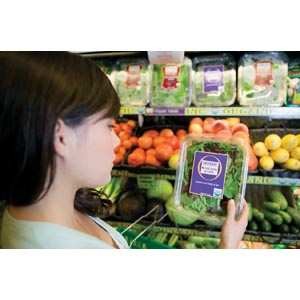How to streamline grocery shopping
 Grocery shopping is a part of life, and whether trips to the local supermarket are a daily, weekly or monthly occurrence, such excursions can be time-consuming.
Grocery shopping is a part of life, and whether trips to the local supermarket are a daily, weekly or monthly occurrence, such excursions can be time-consuming.
Data from the American Time Use Survey, which measures how much time people spend shopping among other things, indicates that people have spent less time shopping since the recession began in 2008, and many people might want to continue this trend of spending less time at the store even as their finances recover. The following are some simple strategies for those who want to do just that.
* Embrace e-commerce offerings. Grocery stores have joined the ranks of other retailers in making it easy for customers to shop for food online. Individuals can browse for sales, shop according to the weekly circular and create lists that make it easier for them to track their purchases.
Another change in how we shop for groceries concerns how the food we purchase makes it into our refrigerators and pantries. Many grocery chains now offer delivery service, and some even have personal shopping services in which customers fill out their orders online, and a store employee gathers all of the groceries. The customer then arrives to pick up and pay for their groceries at a predetermined time. Utilizing such services can curb impulse buys and drastically reduce the time shoppers spend in stores.
* Make a list. Making a list before heading to the store remains one of the biggest time savers when shopping for groceries. A list helps shoppers cut back on the time they spend wandering around a store and wondering what they do or don’t need. Shoppers can even take things one step further by coordinating their list to a store’s layout, which reduces the likelihood that shoppers will make several trips down the same aisle.
* Bring only the coupons you are likely to use. Instead of toting along your entire coupon portfolio, bring only those coupons you plan to use. This allows you to get in and out of the store without rifling through circulars or coupon organizers.
* Shop the perimeter of the store. Shoppers interested in fresh foods should concentrate their shopping efforts on the perimeter of the store. This is typically where fresh produce, meats, poultry, bakery items, and dairy products are kept. Packaged, processed foods are usually kept in the interior aisles.
* Visit during off-peak hours. Avoid stores on the first day of a sale, when your fellow shoppers will be eager to stock up. In addition, try to avoid shopping on the first or last day of the month, when paychecks or government benefit checks arrive. Shopping when school lets out in the afternoon is another busy time of day at many grocery stores. If you truly want to save time, shop late in the evening or in the early morning when stores are less hectic and checkout lines won’t be as long.
* Go it alone. Some shoppers may benefit by flying solo when grocery shopping. It’s often quicker to move through a store when you are on your own.
* Scan as you go. Some stores allow shoppers to scan their groceries as they put them in their carts. The scan gun is linked to their shopping rewards card. When shoppers are ready to go, the shopper then scans a bar code and the entire purchase history gets sent to the register for check-out. This concept cuts down on the time shoppers spend in line.
Comments are closed.